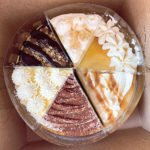It was fall 1991 when I went back to somewhere I’d never been. That’s what it felt like in mid-October 30 years ago when I boarded a Finnair flight from Toronto to Helsinki, Finland then continuing on by ferry to a country that had just regained its independence after 44 years of Soviet/Russian occupation: my ancestral homeland of Estonia.
But there was also something else happening on that visit—it would be the first time I’d be meeting my two half-brothers Jüri and Tõõmas (we had the same father). They and their mother were unable to leave the homeland before the Soviet’s ‘iron curtain’ (occupation) came down to close their access to the world.
Would it be awkward, even strange, to meet up with siblings you only recently knew you had? Surprisingly, it all worked out wonderfully, even though my speaking Estonian was a bit rusty. The two brothers and their families set aside the week for us to get to know each other and to be our personal behind-the-scenes ‘tour’ guides. (My husband and eldest daughter also were on the trip that took place about two months after Estonia became a free country again.)
One question, though, lingered in the back of my mind as it did for many of us former child immigrants visiting the homeland for the first time—what if the pull of the homeland became so strong that I didn’t want to return to Canada?
After arriving in Tallinn, the capital of Estonia, we had a whirlwind week of activities. We explored an abandoned Soviet airbase, with its hidden hangars and empty military buildings. We travelled through the deserted, eerie, ghost-like town Paldiski, once completely fenced with barbed wire by the Soviets/Russians because it was the site of a secret submarine and naval base. We toured the beautiful 16th century Renaissance building of the Brotherhood of the Blackheads with its iconic front doors and I even played on the grand piano in its acoustically-perfect concert hall. We visited the open-air museum Rocca al Mare, with its original re-located historic structures (thatched farm buildings, windmills, wooden church, etc). We also shopped in a Soviet-era ‘foreigners only’ store that was still in operation; visited my father’s hometowns of Sindi and Parnu; spent time inside medieval churches and castles; and attended the theatre to see a Broadway show “Hello Dolly” in Estonian. One evening, we were special guests at a formal dinner in our honour in the president’s private dining room at the presidential Kadgriog Palace (built 1718-1725 by Peter the Great).
So, the fall of 1991 holds all kinds of very special memories for me. Oh, and the question about the pull of the homeland? Well, while my Estonian heritage is very much a part of who I am and I’m comfortable being in Estonia, I found without question my home now is Canada. It is where I belong.




